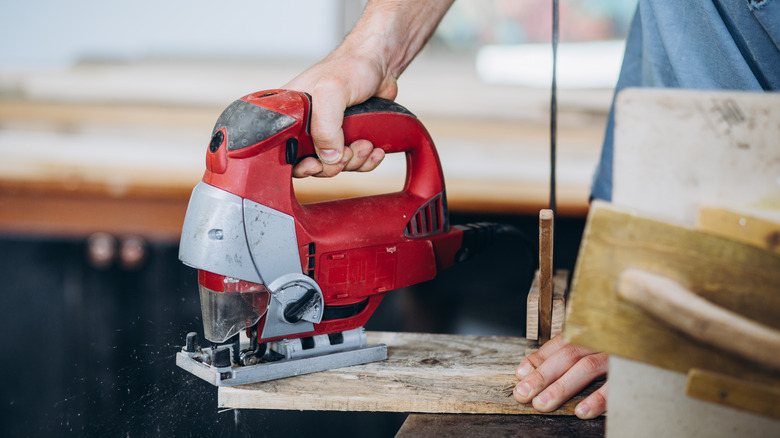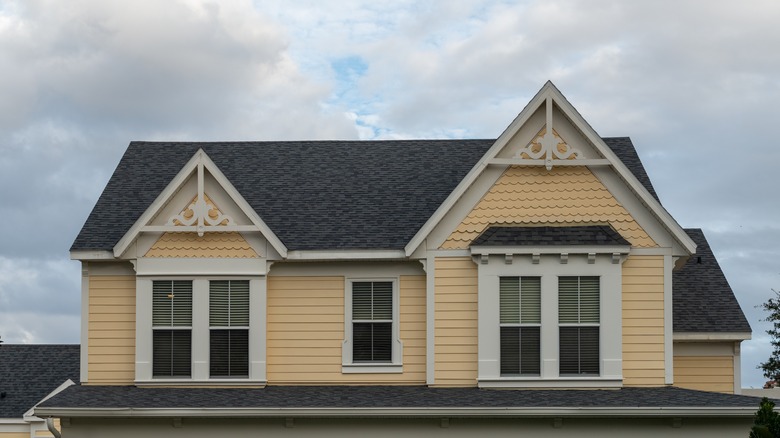The Showstopping DIY That Turns Any Balcony Or Patio Into A Stylish Statement
Looking for a way to add texture and interest to your outdoor spaces? Decorative wooden trim was often a hallmark of older homes, particularly during the late 19th century, when Victorian home styles like the famous Queen Anne sported gingerbread-like details, including scalloped edges around windows, over doors, and on places like porches and balconies. While today's homes are usually much more modern, these elements can still be a way to give a classic look to the outside of your home, including adding simple wooden scalloped elements to anywhere that needs some vintage charm.
All you need to create a scalloped look is plywood or a jigsaw to cut it into rounded pieces of the same size and shape. There are also pieces faux wood pieces, like these from Menards, you can buy to simplify the process. You will also need nails in a nail gun to affix the pieces securely to the underlying surface.
Creating scalloped trim for a balcony
Begin by creating a template for the shape of your scallop and trace it into a sheet of plywood, cutting out the pieces with a jigsaw. Use a brad nailer to affix them, layering the pieces to create a three-dimensional trim and fish scale-look. While this tutorial's arch shape is a classic, you can also create your pieces differently to get an even more ornate look, including teardrops, hearts, and waves. For a more subtle look, make the pieces smaller or the board they are made from thinner to sit closer to the surface.
You can leave your trim natural with a stain and protective coating designed for outdoor use, or paint it to match the exterior of your home to look like it's original. If you want a less dramatic look, try creating a 1-layer scallop that is the same color as a strip of trim above or below. Or, opt for different shades of the same color in rows on a gable or a larger area of the exterior.
Other places to use scalloped trim
While the DIYer above adds scalloping to the underside of an upstairs balcony to accent the back of her house, these scallops would look lovely on any overhead that needs more character. Great options for using scalloping include above windows and doors, shingles on pointed gables, or along exterior moldings and trim. You can also use scalloping on fences, sheds, and kids playhouses for a vintage-inspired look.
For a full neo-Victorian aesthetic, mix scalloping with other details like intricate carved corbels and window shutters to increase your home's curb appeal and charm. If you're looking to add a similar feel to an outdoor space as a renter, try adding a scalloped awning in outdoor fabric or vinyl along an overhang that you can remove when you move out.
Scalloped pieces are also a great addition to interior spaces along wainscoting or around windows and doors. Scalloping is also a great type of wall molding to consider when remodeling. You can even add it to a boring bookshelf on the underside of each shelf to instantly add texture and interest.

